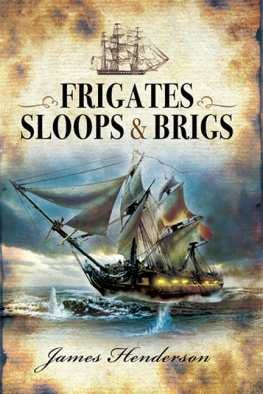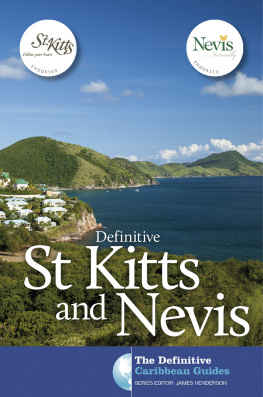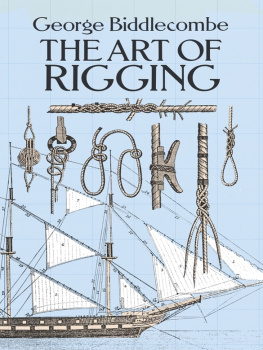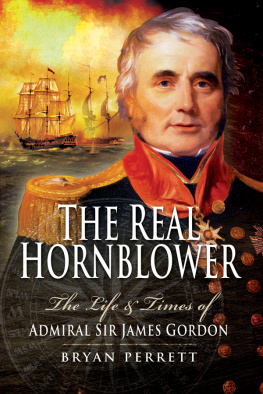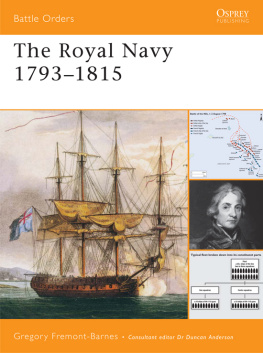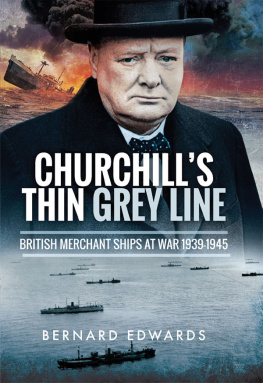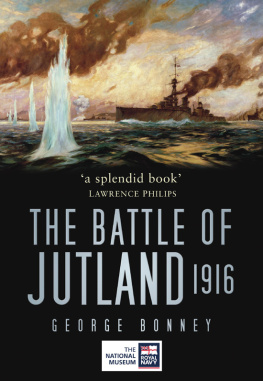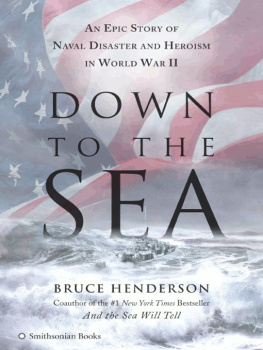

The Frigates was first published in Great Britain in 1970 Sloops and Brigs was first published in Great Britain in 1972, both by Adlard Coles Ltd
Reprinted in 2005 by Pen & Sword Military Classics
Published in this format in Great Britain in 2011 by
Pen & Sword Maritime
an imprint of
Pen & Sword Books Ltd
47 Church Street
Barnsley
South Yorkshire
S70 2AS
Copyright Estate of James Henderson CBE, 1970, 1972, 2005, 2011
ISBN 978-1-84884-526-8
eISBN 9781844682690
The right of James Henderson CBE to be identified as Author of this Work has been asserted by him in accordance with the Copyright, Designs and Patents Act 1988.
A CIP catalogue record for this book is available from the British Library.
All rights reserved. No part of this book may be reproduced or transmitted in any form or by any means, electronic or mechanical including photocopying, recording or by any information storage and retrieval system, without permission from the Publisher in writing.
Typeset in 10.5pt Ehrhardt by
Mac Style, Beverley, E. Yorkshire
Printed and bound in the UK by CPI
Pen & Sword Books Ltd incorporates the imprints of Pen & Sword Aviation, Pen & Sword Maritime, Pen & Sword Military, Wharncliffe Local History, Pen & Sword Select, Pen & Sword Military Classics, Leo Cooper, Seaforth Publishing and Frontline Publishing.
For a complete list of Pen & Sword titles please contact
PEN & SWORD BOOKS LIMITED
47 Church Street, Barnsley, South Yorkshire, S70 2AS, England
E-mail: enquiries@pen-and-sword.co.uk
Website: www.pen-and-sword.co.uk
To Captain James Rowland, DSO and bar,
RN (retd) whose feats of warfare in command
of HMS Wolverine and her consorts in the
North Atlantic showed that the lights kindled
by the frigate captains still burn undiminished
Plates
Notes on the plates, are on .
The author is indebted to the Trustees of the National Maritime Museum, Greenwich for their kind permission to publish the plates reproduced in this book.

Plate 1: Droits de lhomme engaged by INDEFATIGABLE: AMAZON coming up.

Plate 2: AMBUSCADE boarded and captured by Bayonnaise .

Plate 3: SAN FIORENZE and Pimontaise .

Plate 4: FISGARD and Immortalit .

Plate 5: Boats of the SURPRISE cutting out the Hermione .

Plate 6: SYBILLE taking the Forte .

Plate 7: Basque Roads. IMPERIEUSE leading in.

Plate 8: IMPERIEUSE and Calcutta .

Plate 9: SAN FIORENZE taking possession of Pimontaise .

Plate 10: ALCESTE and ACTIVE capturing the Pomone .

Plate 11: Constitution escaping from a British squadron.
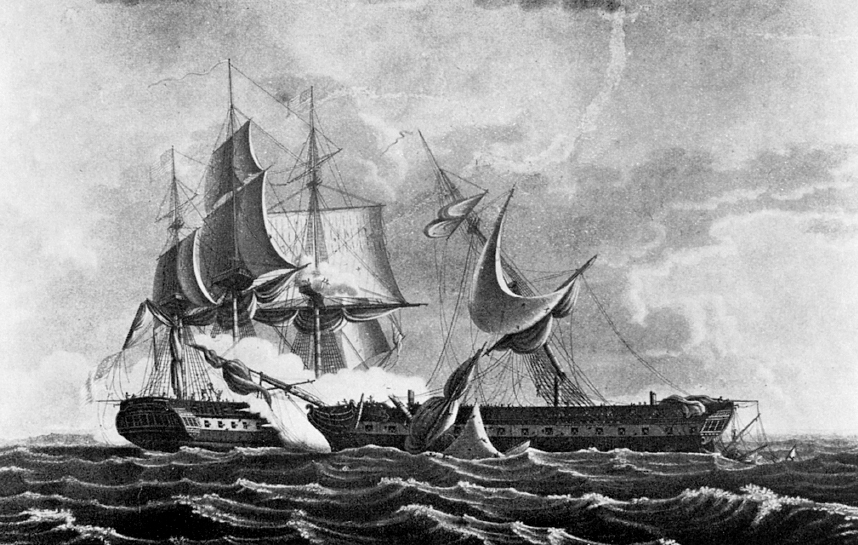
Plate 12: GUERRIERE captured by Constitution .
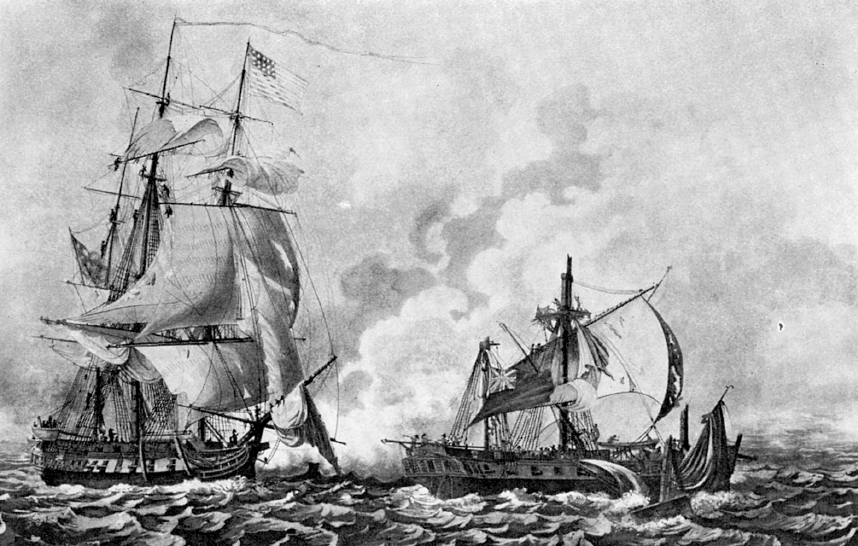
Plate 13: MACEDONIAN captured by United States .
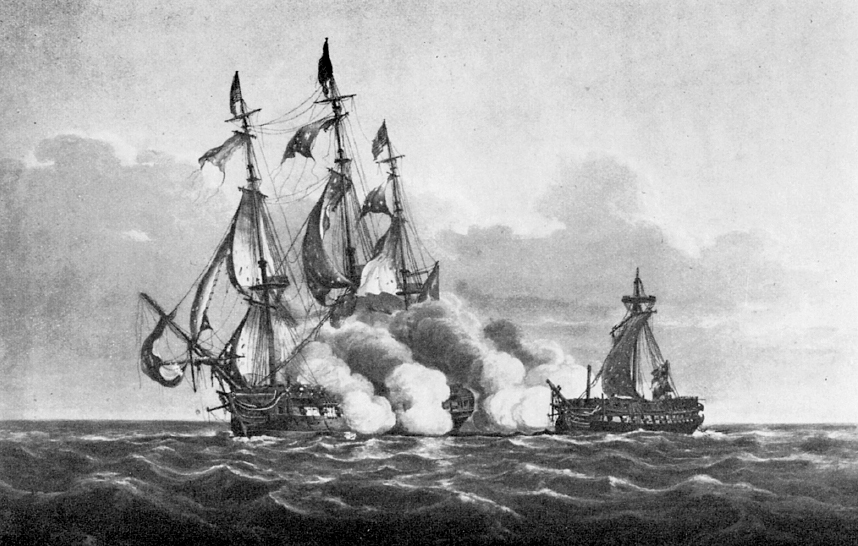
Plate 14: JAVA captured by Constitution .

Plate 15: Chesapeake boarded and captured by SHANNON .
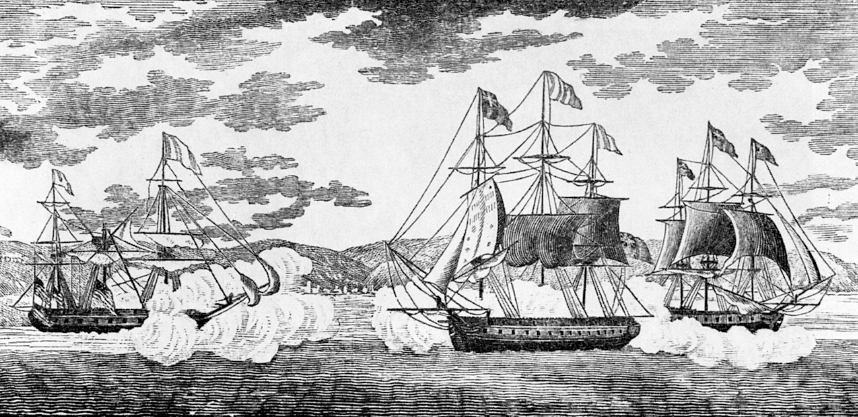
Plate 16: Essex (left) engaged and captured by PHOEBE and CHERUB .
Authors Notes
A good deal of confusion often arises in reading early accounts of this period, due to the fact that so many ships were captured from the enemy and put into service under the same name. Thus at Trafalgar there were both an English and a French Swift-Sure, an English and a French Neptune, with a Spanish Neptuno to make it more difficult. To avoid all difficulty, the name of any ship under British command is printed in SMALL CAPITALS , while the ships of all other nations are printed in italics. At the moment a ship changes hands it changes typography. Thus there is no difficulty in knowing immediately under which command the BONNE - CITOYENNE was in May 1798.
An awkwardness often arises from the fact that many of the best early histories are compiled directly from the log of the ship engaged, an excellent method up to a point. The log noted the change of the year on 1 st January, and the month on its first day but no other day; this was reasonable in a log which was intended to be read through, when submitted to Admiralty; but it can be intensely annoying when one reads, On the 21st., at 6 a.m., sighted a large sail, ENE about 8 leagues, and then has to turn back page after page to find out what month it was, and as many more to find out what year. I have therefore been particular in writing the full date unless obviously redundant.
The term starboard has always been used for that side of the ship which is on your right as you face forward; at the time about which I write, and earlier, the other side was called larboard. During most of the nineteenth century this was the name, but owing to the verbal difficulty of distinguishing larboard from starboard, it became customary to call larboard port; this was easier, since not only was the port light red, but after dinner one passed the port to the left. However, I have retained larboard, because in print there is no confusion, and it corresponds with the contemporary accounts.
Next page
